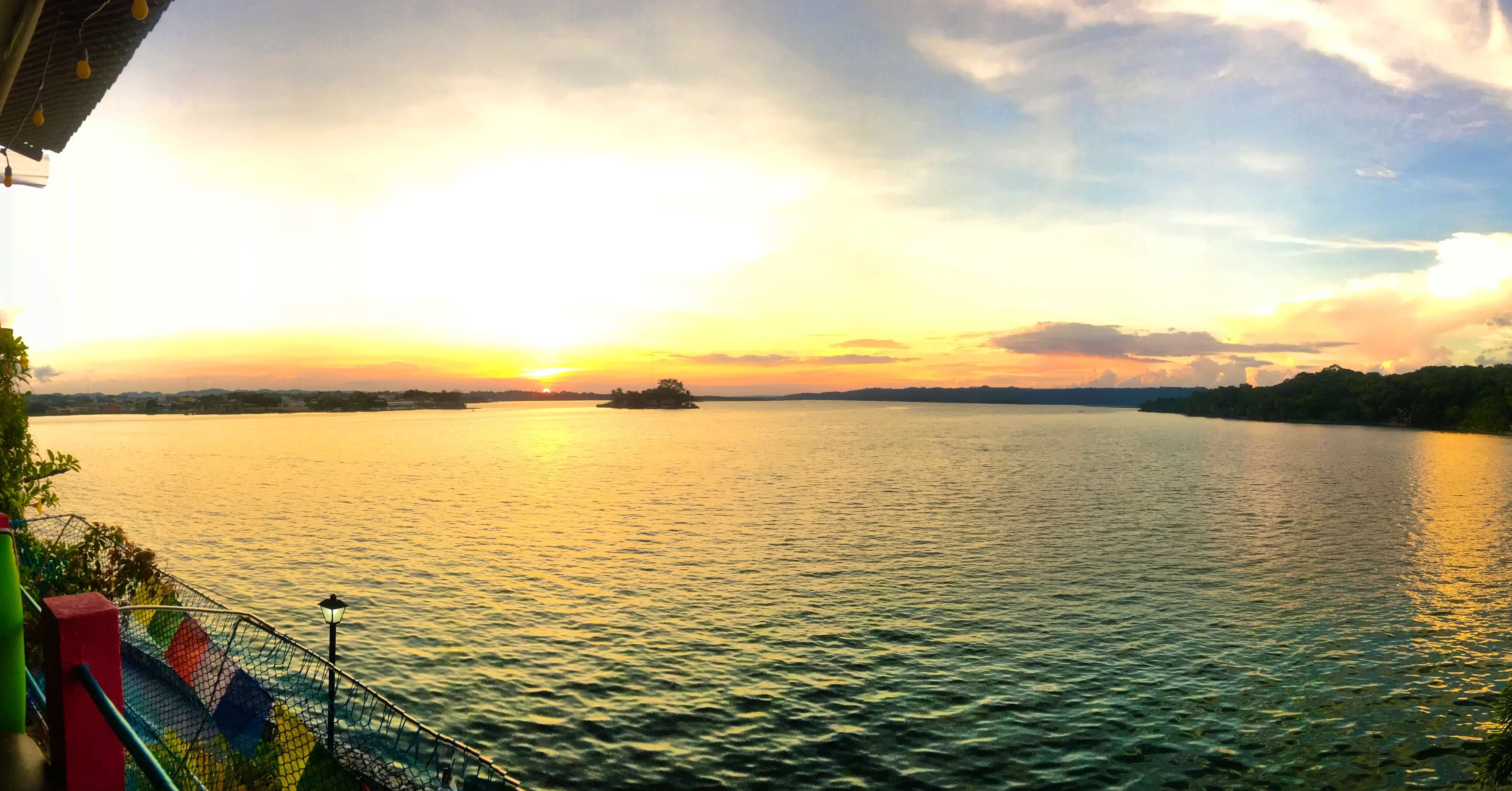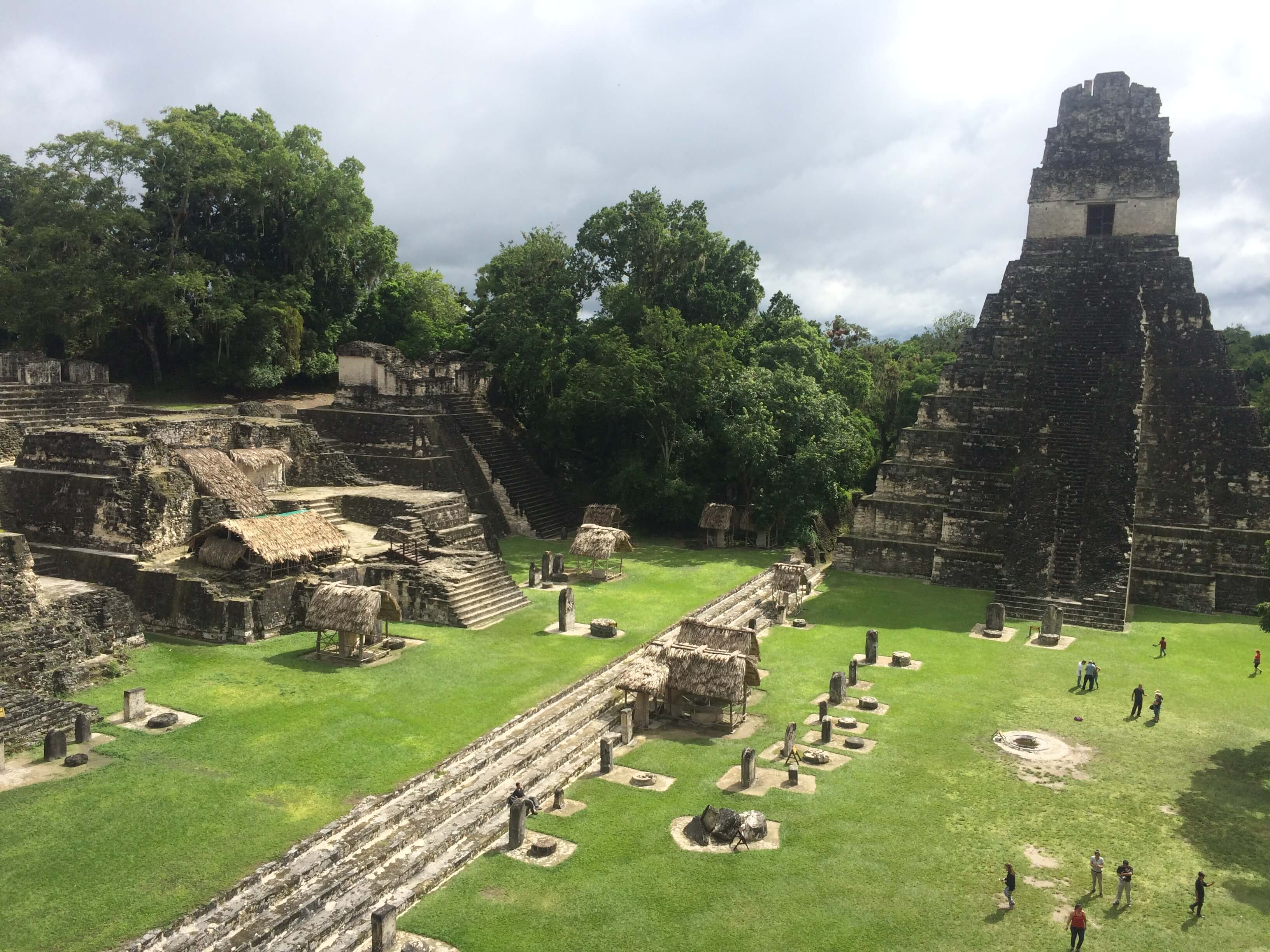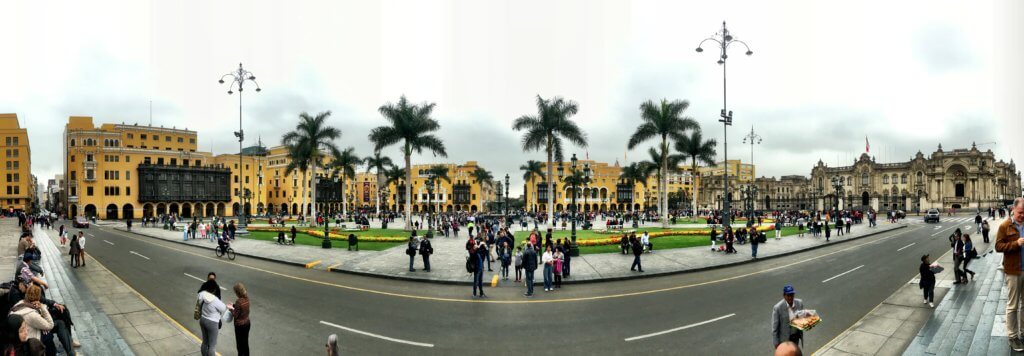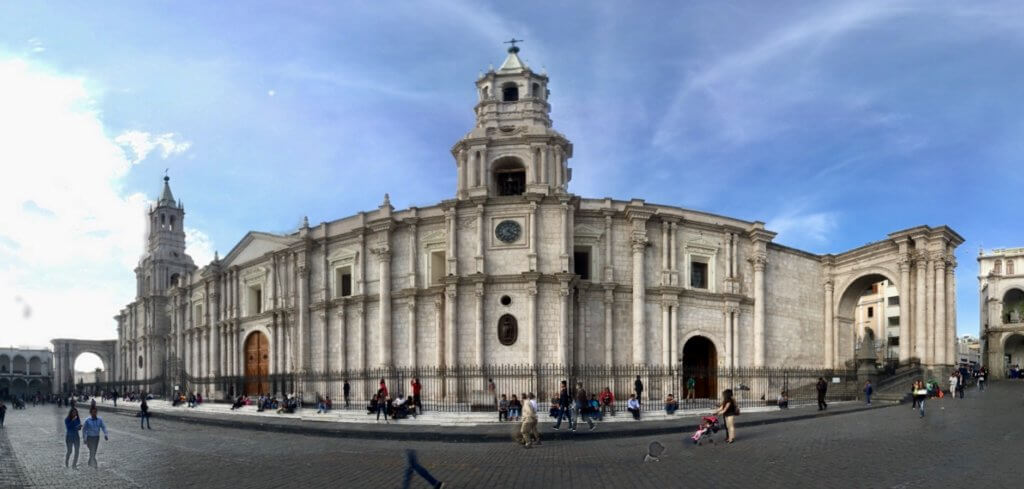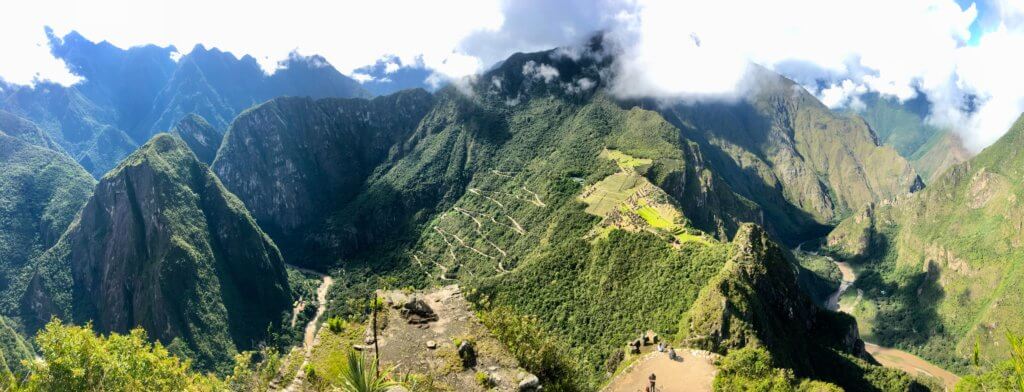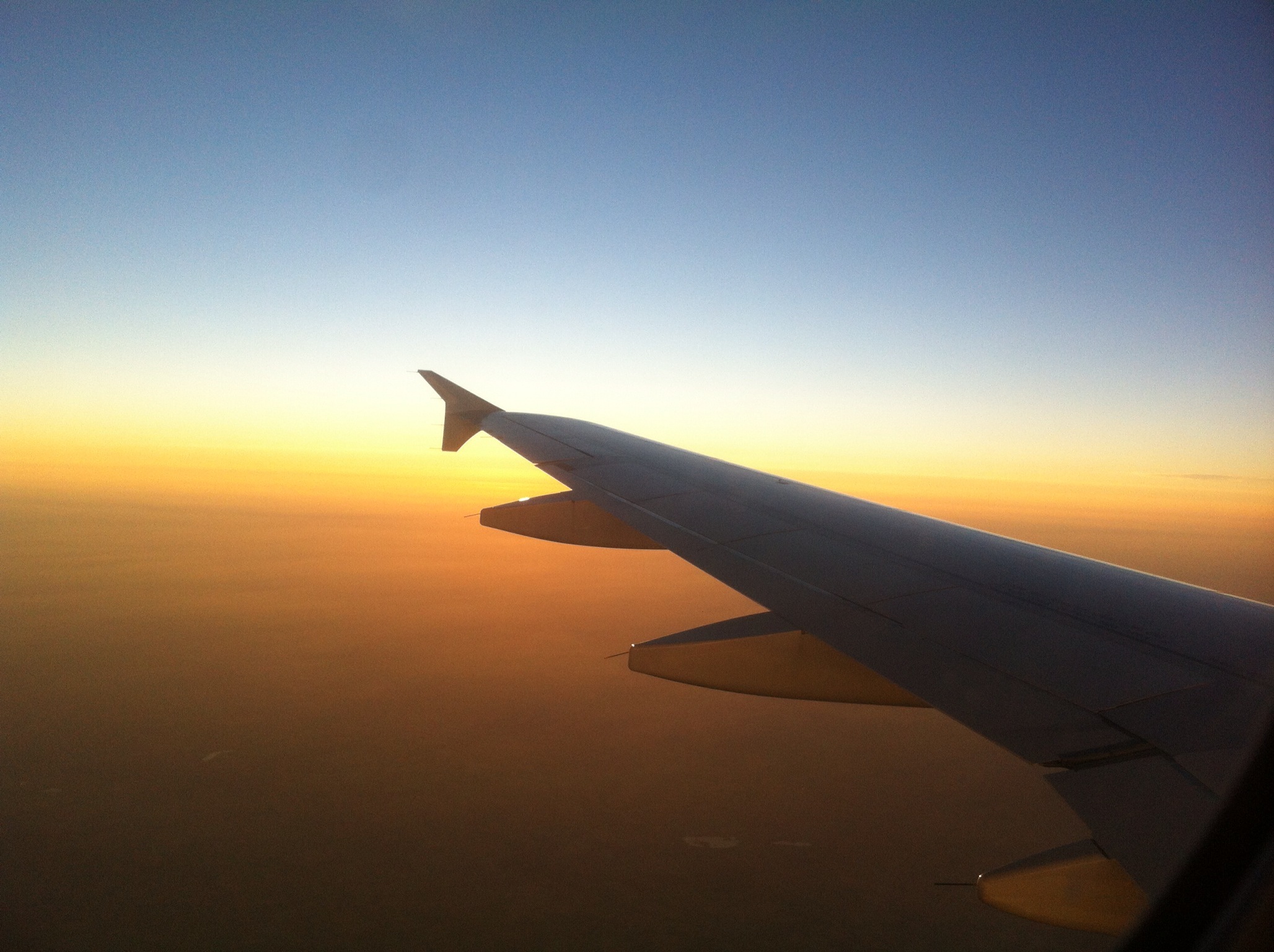Avec un peu de retard, voila un résumé de nos aventures aux Belize, Guatemala et Pérou!
BELIZE : 30 septembre – 6 octobre
 Nous voila donc à Bélize (ou au Belize?). On parle anglais au Belize et on paie en dollar belizien (1USD=2BZD). Le résumé de nos aventures dans ce pays est plutôt minime. Nous nous sommes cantonné à Caye Caulker, une petite ile au large du Belize sur la mer des Caraibes à 30km a l’est de Belize City sur la côte. Caye Caulker est une minuscule ile de 8 km de long sur 1 km de large dont l’unique centre ville est appelé le “village” et compte environ 2000 habitants à l’année. On y accède principalement par bateau mais un petit aéroport est présent. La particularité de cette ile est qu’il n’y a pa de voiture, pas de route goudronnée seulement voiturettes de golf circulant sur le sable! C’est plutôt paradisiaque, musique reggae un peu partout!
Nous voila donc à Bélize (ou au Belize?). On parle anglais au Belize et on paie en dollar belizien (1USD=2BZD). Le résumé de nos aventures dans ce pays est plutôt minime. Nous nous sommes cantonné à Caye Caulker, une petite ile au large du Belize sur la mer des Caraibes à 30km a l’est de Belize City sur la côte. Caye Caulker est une minuscule ile de 8 km de long sur 1 km de large dont l’unique centre ville est appelé le “village” et compte environ 2000 habitants à l’année. On y accède principalement par bateau mais un petit aéroport est présent. La particularité de cette ile est qu’il n’y a pa de voiture, pas de route goudronnée seulement voiturettes de golf circulant sur le sable! C’est plutôt paradisiaque, musique reggae un peu partout!
Nous sommes restés presque une semaine, repoussant par 2 fois notre date de départ, tellement nos supers vélos, notre vue mer, nos petits-dej (fresh smoothies & bubble waffle) sur la plage, nos homards quasi systématique pour déjeuner, nos piscines (oui au pluriel), et surtout une atmosphère typiquement rasta-caribeenne nous ont convaincus de rester un peu plus.
Les photos parleront plus d’elles mêmes :
J+30, samedi 6 octobre, nous quittons Caye Caulker un peu triste, direction Belize City puis Flores au Guatemala. Encore une longue journée transport se profile pour nous, départ bateau de l’embarcadère à 9h après un dernier petit dej à “Ice n’ Beans”, arrivée à Belize City vers 10h30, puis bus à 11h, traversé de la frontière Belize-Guatemala, et arrivée à Flores vers 16h.
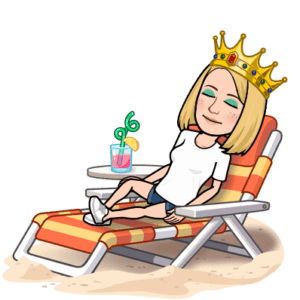 Belize was pure relaxation for 6 days…We stayed on the island
Belize was pure relaxation for 6 days…We stayed on the island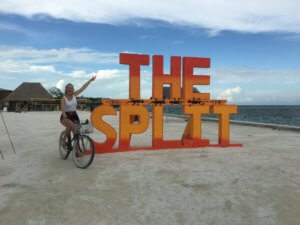 of Caye Caulker, with no cars, only bikes and golf carts to get around the tiny island. Most days consisted of sharing a lobster for lunch, cruising around the island on our bikes (my favourite thing to do there) and relaxing by the pool at our resort. Breakfast was also amazing, enjoying a waffle and fresh smoothie by the water with only a few tourists and the local rastamen passing by us. The only negative in this perfect scenario, was the giant mosquitos that infested the island every night for one hour at dusk. They were viscious, but the bug spray dealt with that!
of Caye Caulker, with no cars, only bikes and golf carts to get around the tiny island. Most days consisted of sharing a lobster for lunch, cruising around the island on our bikes (my favourite thing to do there) and relaxing by the pool at our resort. Breakfast was also amazing, enjoying a waffle and fresh smoothie by the water with only a few tourists and the local rastamen passing by us. The only negative in this perfect scenario, was the giant mosquitos that infested the island every night for one hour at dusk. They were viscious, but the bug spray dealt with that!
Sadly we had to leave our island paradise and continue our adventure in Guatemala…
GUATEMALA : 6 octobre – 12 octobre
Guatemala is not a typical relaxing destination for a holiday : the different safety warnings (we wo n’t expose them here) limited our moves in cities, especially at night.
n’t expose them here) limited our moves in cities, especially at night.
Flores was the first city we visited after the very relaxed island of Caye Caulker – a big change! There were cars, buses and tuk-tuk’s everywhere. It was still hot, but most people were hidden away in their homes or hotels. We quickly organised our tickets for Tikal (the ancient Mayan ruins) and a bus ticket to Antigua for the following day. We didn’t want to stay in Flores longer than we had to.
After checking into our hotel by the lake, we took a walk through town. The walk by the lake was beautiful and the sun slowly went down as we walked along. Local children were enjoying the water whilst their parents relaxed in the restaurants opposite the lake. The street by the lake was full of restaurants and hotels with plants growing on the outside. However around the corner the streets were busy with trafic and small convenince stores. We had dinner at a restaurant focusing on sustainbility and enjoyed lots of vegetables whilst sitting on reused furniture and then went to bed early…we had an early start the next day !
After very little sleep (we were scared we would miss our alarm clock) we got up at 4:00am to take the bus to Tikal. It was still completely dark outside and we slept most of the way to the ruins. We arrived at Tikal at about 6am…ready to explore the ruins. It was only just light and their were very few people around. The ruins were surrounded by jungle and any adaptions to the site for tourists was very natural. We spent nearly 6 hours exploring the area and climbing the ruins. It was easily the best ruins we have vistied in Central America. It was a really special day and well worth the early start.
We arrived back on the island of Flores hot, sweaty and exhausted. We had time just to prepare for the bus and have a late lunch / early dinner before the overnight bus ride to Antigua.
The bus ride felt loooooong! It was freezing on the bus and the bus driver drove very fast! But we arrived safely and checked into a beautiful hotel in Antigua.
Antigua was a beautiful city, colourful and clean, and the people were really friendly. We spent alot of timing walking around the city, looking at old (and very colourful) churches, relaxing in the plaza and enjoying afternoon tea in the cafes. We even had time for a massage.
On our last day in Antigua we had a private tour of the town and the surrounding small villages. We went to Cerro de la Cruz, the view point over the city. The view was magnificent! The villages outside Antigua were more rundown and less picturesque, but still very charming.
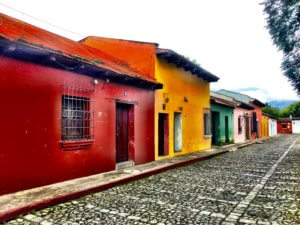
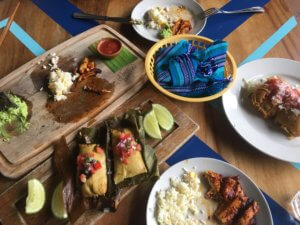 Finally, our last day in Guatemala was almost spent in the car with our tour guide trying to explore Guatemala City.
Finally, our last day in Guatemala was almost spent in the car with our tour guide trying to explore Guatemala City.
Not quite what we planned when we decided to explore the city, but the trafic was terrible and we only had time for a visit at the National Museum of Archeology and Ethnology, the presidential palace and the cathedral in the centre of the city.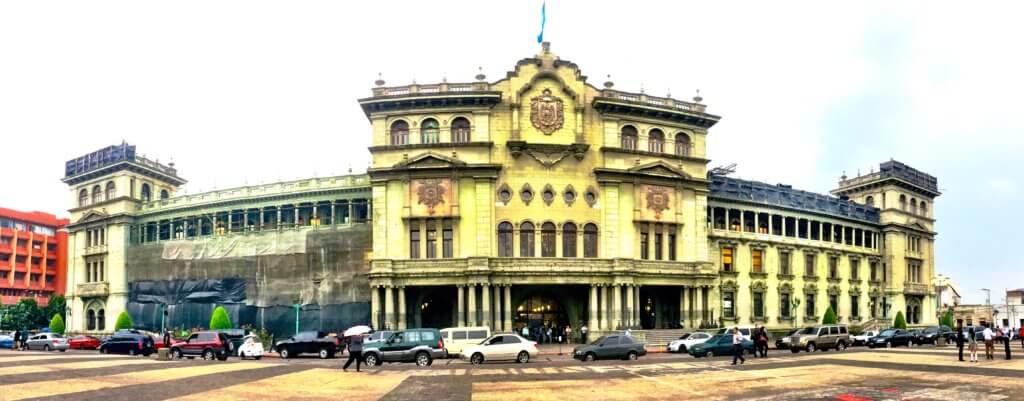
We definitely recommend visiting Guatemala !
PEROU : 12 octobre – 27 octobre
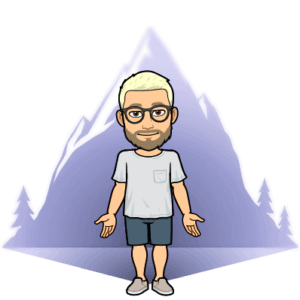 Lima : après 2 vols de 3/4h et un superbe survol du canal de Panam
Lima : après 2 vols de 3/4h et un superbe survol du canal de Panam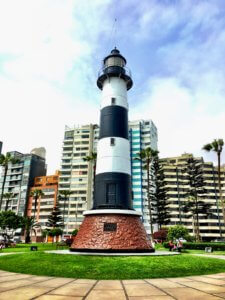 a, nous voilà arrivé à Lima, Pérou. Bus /shuttle de l’aéroport (6dol chacun), nous prenons nos quartier s dans notre hotel en plein coeur du quartier de Miraflores de Lima, quartier réputé et recommandé par les guides, blogs et routards. Nous restons 4 jours à Lima qui nous surprend par son dynamisme et sa modernité, bien que Lima soit la seconde capitale la plus sèche au monde (vu du ciel c’est flagrant) ; 4 jours à déambuler dans les rues (voire faire de longues marches le long de la côte) et tester la cuisine locale (et un peu moins locale). Nous avons également consacré une pleine journée à la visite du vieux Lima (un peu moins glamour) : la place de la Mairie, le couvent San Francisco et ses catacombes, la cathédrale, le panthéon (des héros), le musée des Arts de Lima et pour finir cette journée de visite : le circuit magique de l’eau, sorte de visite dans un parc sur le theme de l’eau de plusieurs installations dynamiques (plutot tres bien fait) avec beaucoup de monde (touristes et locaux).
a, nous voilà arrivé à Lima, Pérou. Bus /shuttle de l’aéroport (6dol chacun), nous prenons nos quartier s dans notre hotel en plein coeur du quartier de Miraflores de Lima, quartier réputé et recommandé par les guides, blogs et routards. Nous restons 4 jours à Lima qui nous surprend par son dynamisme et sa modernité, bien que Lima soit la seconde capitale la plus sèche au monde (vu du ciel c’est flagrant) ; 4 jours à déambuler dans les rues (voire faire de longues marches le long de la côte) et tester la cuisine locale (et un peu moins locale). Nous avons également consacré une pleine journée à la visite du vieux Lima (un peu moins glamour) : la place de la Mairie, le couvent San Francisco et ses catacombes, la cathédrale, le panthéon (des héros), le musée des Arts de Lima et pour finir cette journée de visite : le circuit magique de l’eau, sorte de visite dans un parc sur le theme de l’eau de plusieurs installations dynamiques (plutot tres bien fait) avec beaucoup de monde (touristes et locaux).
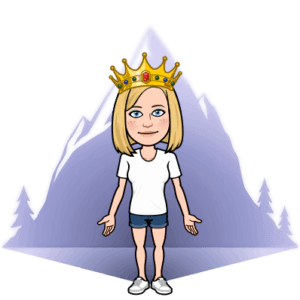 After 2 flights we arrived in Lima, Peru. We stayed in the popular Miraflores and we were not dissapointed. Our hotel was surrounded by parks full of people (locals practising traditional dances) and restaurants and shops. The city managed to blend modernity with old traditions. We enjoyed walking along the esplanade in Miraflores and Baracoa, the weather was perfect – sunny but not too hot. We visited the old city, exploring the Townhall, San Francisco Convent and catacombs, the cathedral, pantheon and the Museum of Modern Art. We also went to the magic water show in a park where they had dynamic water installations using lights and fountains. It was a perfect way to end the day in Lima. We also got to celebrate Tom’s birthday whilst we were here. He enjoyed birthday cake at breakfast and we went to a delicious Italien restaurant for lunch, before we took the night bus to our next destination – Arequipa.
After 2 flights we arrived in Lima, Peru. We stayed in the popular Miraflores and we were not dissapointed. Our hotel was surrounded by parks full of people (locals practising traditional dances) and restaurants and shops. The city managed to blend modernity with old traditions. We enjoyed walking along the esplanade in Miraflores and Baracoa, the weather was perfect – sunny but not too hot. We visited the old city, exploring the Townhall, San Francisco Convent and catacombs, the cathedral, pantheon and the Museum of Modern Art. We also went to the magic water show in a park where they had dynamic water installations using lights and fountains. It was a perfect way to end the day in Lima. We also got to celebrate Tom’s birthday whilst we were here. He enjoyed birthday cake at breakfast and we went to a delicious Italien restaurant for lunch, before we took the night bus to our next destination – Arequipa.
 Arequipa : 16h de bus plus tard (de nuit quand même, en siége VIP), nous arrivons à Aréquipa, seconde ville du pays, nettement au sud du pays et à 2400 m d’altitude (pour commencer à s’acclimater). Nous y restons 3 jours, suffisament pour prendre le poul de la ville et passer une grande journée dans le Canyon de la Colca (en culminant à 5000 m dès 7h du matin ca pique), voire quelques condors, des sources d’eau chaudes et le point de vue magnifique sur le canyon.
Arequipa : 16h de bus plus tard (de nuit quand même, en siége VIP), nous arrivons à Aréquipa, seconde ville du pays, nettement au sud du pays et à 2400 m d’altitude (pour commencer à s’acclimater). Nous y restons 3 jours, suffisament pour prendre le poul de la ville et passer une grande journée dans le Canyon de la Colca (en culminant à 5000 m dès 7h du matin ca pique), voire quelques condors, des sources d’eau chaudes et le point de vue magnifique sur le canyon.
 We arrived in Arequipa after 16 hours (yes…16 hours) on the bus! We had a first class bus with chairs that reclined 160 degrees and meal service…however the journey was to
We arrived in Arequipa after 16 hours (yes…16 hours) on the bus! We had a first class bus with chairs that reclined 160 degrees and meal service…however the journey was to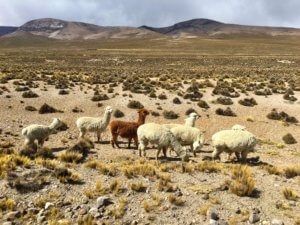 ugh! Early in the morning when I looked out the bus window, I was amazed at how much the landscape had changed. We were completely in the desert, surrounded by rocky mountains and no vegetation was to be seen. It was incredible! The change in altitude was tough going from sea level in Lima to 2400 m altitude in Arequipa.
ugh! Early in the morning when I looked out the bus window, I was amazed at how much the landscape had changed. We were completely in the desert, surrounded by rocky mountains and no vegetation was to be seen. It was incredible! The change in altitude was tough going from sea level in Lima to 2400 m altitude in Arequipa.
Dizzy and nauseaus we explored Arequipa – a charming city with lots of activity in the town square. We also organised a trip to Colca Canyon to explore the surrounding area more. We left for Colca Canyon at 3:30 am – it was torture getting up at that time, but when we arrived at the canyon it was absolutely worth it. At 5000m it was freezing at the top and their was snow on the tops of the mountains – a beautiful contrast with the early morning blue sky.
 Cusco : 12h de bus de nouveau plus tard, nous voilà à Cusco, ancienne capitale de l’empire Inca,
Cusco : 12h de bus de nouveau plus tard, nous voilà à Cusco, ancienne capitale de l’empire Inca, 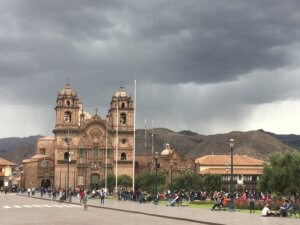 culminant à 3400 m d’altitude (et ca se ressent tres tres vite) et ville étape quasi obligatoire pour le Machu Picchu et les treks environnants (auxquels nous n’échapperont pas). Le centre ville est magnifique, mix entre la culutre Inca et l’architecture coloniale espagnole (parlons plutot de remplacement…). Nous y resterons presque 6 jours ; dont 2 jours au Machu Picchu.
culminant à 3400 m d’altitude (et ca se ressent tres tres vite) et ville étape quasi obligatoire pour le Machu Picchu et les treks environnants (auxquels nous n’échapperont pas). Le centre ville est magnifique, mix entre la culutre Inca et l’architecture coloniale espagnole (parlons plutot de remplacement…). Nous y resterons presque 6 jours ; dont 2 jours au Machu Picchu.
La visite du Machu Picchu s’effectue depuis la presque charmante ville étape obligatoire de Aguas Calientes que nous atteignons grâce au train depuis Cusco 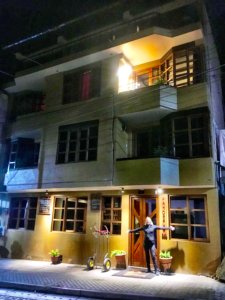 (en fait la station est Poroy, à 30 minutes de taxi du centre de Cusco) pour un cout plutot élevé mais avec 3h de train à travers la campagne bucolique péruvienne et nous voilà à A.C vers midi. Nous avons donc le temps d’acheter nos billets de bus (nous avions déjà réservé nos billets pour le Machu Picchu + Hayana Picchu du lendemain – il s’agit de la montagne surplombant le site avec une vue imprenable…mais qui se mérite), déjeuner, ballade dans la ville et coucher tot (encore un réveil à 4h du matin nous attend).
(en fait la station est Poroy, à 30 minutes de taxi du centre de Cusco) pour un cout plutot élevé mais avec 3h de train à travers la campagne bucolique péruvienne et nous voilà à A.C vers midi. Nous avons donc le temps d’acheter nos billets de bus (nous avions déjà réservé nos billets pour le Machu Picchu + Hayana Picchu du lendemain – il s’agit de la montagne surplombant le site avec une vue imprenable…mais qui se mérite), déjeuner, ballade dans la ville et coucher tot (encore un réveil à 4h du matin nous attend).
Lundi 22 octobre : c’est LE jour J pour le Macchu Picchu yeaaaah !!, il est 5h du mat’ et déjà une file impressionnante attend les premiers bus pour monter sur le site. Nous arrivons à l’entrée du MP vers 7h et nous avons des billets pour le Hayana Picchu qui ouvre à 7h30, 1h30 plus tard de grimpette très sérieuse, sous la pluie, le vent, le soleil et plutot risqué d’un point de vue sécurité, nous sommes au sommet et ca vaut le coup 1000 fois !
Ciel dégagé, vue imprenable sur le Machu Picchu, nous restons sans voix (une photo remplacera toutes les descriptions)! 1h30 de descente plus tard dans les mêmes conditions et nous revoilà sur le site que nous parcourons rapidement (tellement la foule est dense et nos émotions fortes de la matinée de montée/descente). Retour à Aguas Calientes par le bus vers 13h, rapide déjeuner et c’est déjà l’heure pour notre train pour Cusco vers 15h30 pendant lequel nous rencontrerons un couple de hollandais avec qui nous échangeons quelques tips sur la Bolivie principalement.
Arrivé à Cusco avec 2h de retard (problème mécanique sur notre train) et retour à notre hotel épuisé de nos 2 jours de vadrouille. Nous nous couchons tot en préparation de notre trek du lendemain à 5200 m d’altitude pour la visite de la « Rainbow Mountain », aussi appelé montagne aux 7 couleurs (avec un pickup à notre hôtel à 4h du matin). Le trek en soi n’est pas compliqué mais l’altitude, nos courtes nuits et le froid compliquèrent grandement cette ascencion de quasi 2h…mais une fois de plus la vue du sommet est grandiose ! 2h également pour redescendre puis 3h de route pour Cusco que nous atteindrons dans la fin d’après-midi.
Dès le lendemain, 7h de bus pour Puno dès 8h du matin…et donc rapide jus d’orange avant de prendre la route : grave erreur…qui nous coutera de pénible complication d’estomac pour 2 jours (en plus de la fatigue et de l’altitue et d’un moment plus que désagréable pendant ce trajet).
 Yet another night bus…this time arriving in Cusco. Cusco is higher in altitude than Arequipa, but we have started to adapt more now. Cusco was another beautiful city, full of grand churches and cathedrals around a town square. We explored the city as much as possible before taking the tourist train to Aguas Calientes to vist Machu Pichu. The views from the train were spectacular and there was a lot more greenery than in Arequipa. Aguas Calientes was a nice but chaotic village to prepare for the trek up Hayana Pichu.
Yet another night bus…this time arriving in Cusco. Cusco is higher in altitude than Arequipa, but we have started to adapt more now. Cusco was another beautiful city, full of grand churches and cathedrals around a town square. We explored the city as much as possible before taking the tourist train to Aguas Calientes to vist Machu Pichu. The views from the train were spectacular and there was a lot more greenery than in Arequipa. Aguas Calientes was a nice but chaotic village to prepare for the trek up Hayana Pichu.
I had done a lot of pre-reading on Hayana Picchu and watched many youtube clips of the ‘stairs of death’…and I was nervous! I had almost no sleep before leaving the next morning (at 4am).
Even before 4 am people were outside the bus stop queing to go to Machu Picchu. 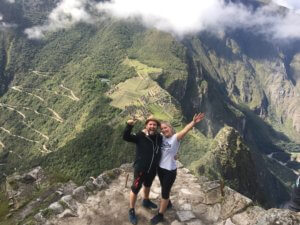 We joined the line and I anxiously waited for the bus to come. Everything moved smoothly and before I knew it we had entered Machu Picchu. It was an incredible site, and when we first arrived there were not too many tourists. Still nervous, we went to register and start climbing Hayana Picchu. The walk was physically challenging, but absolutely fine. The views were incredible and I loved every minute of the walk. Most people walked quite slowly up the mountain as it could be quite dangerous if you did not pay attention. But this day was definitely a highlight of the trip!
We joined the line and I anxiously waited for the bus to come. Everything moved smoothly and before I knew it we had entered Machu Picchu. It was an incredible site, and when we first arrived there were not too many tourists. Still nervous, we went to register and start climbing Hayana Picchu. The walk was physically challenging, but absolutely fine. The views were incredible and I loved every minute of the walk. Most people walked quite slowly up the mountain as it could be quite dangerous if you did not pay attention. But this day was definitely a highlight of the trip!
Allowing no time to rest, the following day we are up early again to take the bus to Rainbow Mountain. We had heard mixed things about the mountain, just a few days before we went it was covered in snow and mud, but we were still keep to go. Our tour guide prepared us with plenty of ‘coca leaves’ and we left to climb the mountain. The majority of the walk was quite easy (considering the altitude), but the final 500 m was hell. It was difficult to breath, freezing cold and very steep…we could only walk at a snails pace. The area was surrounded by beautiful green mountains with snow covered peaks, in the end (for us) they were more beautiful than Rainbow Mountain.
 Puno : arrivé vers 15h à notre hôtel, couché à 16h et réveil le lendemain vers 14h (presque 12h de sommeil et quasi 24h sans sortir de la chambre tellement nous étions faibles), nous étendons donc notre séjour de 24h (soit 4 jours au total) histoire de découvrir Puno et le lac Titikaka dès le surlendemain. Le lac Titikaka, plus haut lac navigable du monde, est impressionant : de par sa taille qui laisse penser à une mer et par la vie qui y reigne (côté Péruvien tout du moins). Nous y passons donc une journée avec visite de l’ile flottante et de l’ile « Taquile » et notamment un super déjeuner avec vue sur le lac (ravis après notre régime plutot sec depuis 2 jours). Au retour à Puno, nous avons la chance et le privilège d’assister aux défilés de l’ensemble des classes de l’université de Puno, chaque classe ayant un ‘déguisement’ particulier : unique moment !
Puno : arrivé vers 15h à notre hôtel, couché à 16h et réveil le lendemain vers 14h (presque 12h de sommeil et quasi 24h sans sortir de la chambre tellement nous étions faibles), nous étendons donc notre séjour de 24h (soit 4 jours au total) histoire de découvrir Puno et le lac Titikaka dès le surlendemain. Le lac Titikaka, plus haut lac navigable du monde, est impressionant : de par sa taille qui laisse penser à une mer et par la vie qui y reigne (côté Péruvien tout du moins). Nous y passons donc une journée avec visite de l’ile flottante et de l’ile « Taquile » et notamment un super déjeuner avec vue sur le lac (ravis après notre régime plutot sec depuis 2 jours). Au retour à Puno, nous avons la chance et le privilège d’assister aux défilés de l’ensemble des classes de l’université de Puno, chaque classe ayant un ‘déguisement’ particulier : unique moment !
Dès le lendemain, 5h de bus pour Copacabana en Bolivie, de l’autre côté du lac. Bye-bye Pérou !
 Bam! We drank a dodgy orange juice before leaving Cusco and spent the next two days recovering in bed. It was not the best start to our visit in Puno, but we still managed to go and visit the floating island on Lake Titicaca and visit one of the islands. We even enjoyed a delicious lunch with trout from the lake.
Bam! We drank a dodgy orange juice before leaving Cusco and spent the next two days recovering in bed. It was not the best start to our visit in Puno, but we still managed to go and visit the floating island on Lake Titicaca and visit one of the islands. We even enjoyed a delicious lunch with trout from the lake.
When we returned from vsiting Lake Titicaca there was a huge celebration for the university students of Peru.
A parade went around the city, with uni students wearing traditional costumes and dancing through the streets to music. The parade was fantastic, we were really lucky to see it on our last night in Peru.
Sadly it was time to leave Peru, for our next adventures in Bolivia…



